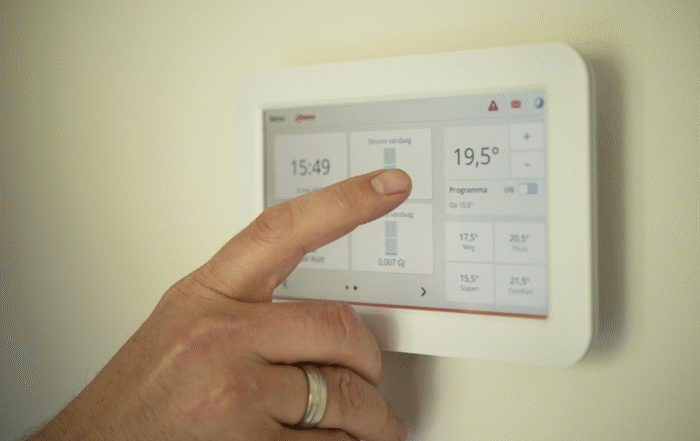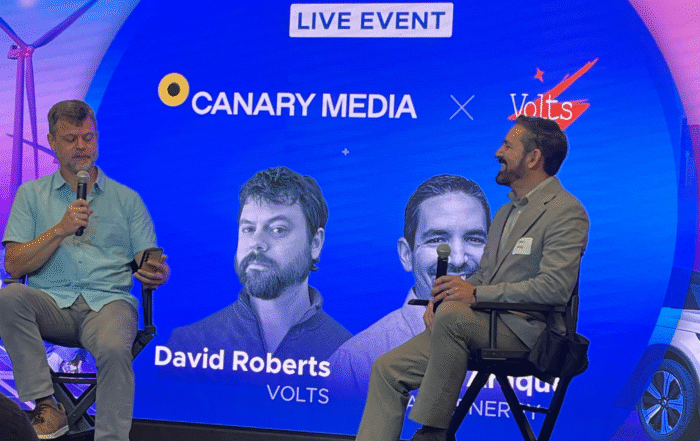
Chris Moyer
Founder & President
A trained pilot from Idaho who once narrowly avoided a deer while landing is now leading the geothermal trade association at a pivotal moment for the industry. Today we’re featuring Bryant Jones, who’s been the executive director of Geothermal Rising since January 2023.
Know someone who should be featured? Email us: info@echocomms.com.
About Bryant: He is a policy and energy scholar with extensive experience at the intersection of policy, technology, and the clean energy transition. His research at Boise State University focused on how energy advocacy coalitions shape narratives and influence policy agendas. With 15 years of experience at the federal, state, and local levels, he has held roles at the White House Office of Management, the U.S. Department of State, and on Capitol Hill. He is also a National Security Fellow with the Truman National Security Project. Bryant lives in Massachusetts with his spouse and three children. He enjoys skiing, fly fishing, and exploring ways to accelerate the clean energy transformation.
We spoke with Bryant over email last week:
How did you get into geothermal and become the executive director of Geothermal Rising?
Bryant Jones: Studying the impact and impetus of technology transitions fascinates me. Whether looking at them in real-time or from a historical perspective, they are multifaceted. I enjoy investigating the impetus behind them, how they are adopted, and what accelerates their success or failure. A clear picture almost always includes social, policy, macro-organizational, economic, and cultural elements.
Humanity has transitioned from technology to technology throughout its existence, each with ramifications. We transitioned from horse buggies to internal combustion engines for local travel, from whale blubber to kerosene to light our homes, and from coal to natural gas for heating. Human ingenuity is a powerful force that spurs regular technological transitions and upgrades. I stumbled upon geothermal energy as a perfect example of an upgrade with many variables and possibilities.
My work has always been at the nexus of public policy and technological progress. In 2017, after about a decade in Washington, D.C., working at the White House and the State Department, I joined Boise State University, where I began a PhD program and researched energy technology transitions and stagnation. My academic discipline is Science and Technology Studies, a field within Public Policy.
Fortunately, one of my case studies within that program involved geothermal. Through this research, I was introduced to the geothermal community. I became fond of the people and discovered a rich culture of inclusion, creativity, and innovation. The geothermal industry is very dynamic, but it is not new. The first modern-day use of geothermal direct use started in 1892 in Boise, Idaho, and the first electrons from geothermal sources were generated in 1913 in Tuscany, Italy.
This long history, rich community of people, and vast potential of technology convinced me to support the industry and join Geothermal Rising as Executive Director.
What is the biggest challenge and/or opportunity facing the geothermal industry?
BJ: The biggest opportunity for the geothermal industry is that it is a resource available to humans as long as the Earth continues to spin and the sun continues to shine. Everyone can access abundant, clean energy with geothermal energy in the mix.
When people learn about geothermal energy, they often become obsessed with it. Rightfully so: Geothermal creates heat, cooling, and 24/7 baseload power! It is locally made and requires no critical minerals. Geothermal reduces geopolitical conflicts because it doesn’t rely on global supply chains. It has the lowest lifecycle carbon footprint and is the most environmentally friendly of all energy technologies. And, because geothermal utilizes technology from the oil and gas industry, it offers an off-ramp for hydrocarbon professionals who want to actively support the energy transition in their daily jobs.
Geothermal does not have a technology problem; it has a policy and education problem. The industry’s main challenge is that geothermal has been left out of important federal and subnational legislation policy for far too long.
Geothermal is an invisible technology because the source of energy for heat, cold air, and electricity is under our feet, and it has a relatively unobtrusive footprint, so we don’t see the infrastructure required for other energy technologies such as oil, wind, gas, solar, hydro, and nuclear.
People do not know when their lights are on due to a nearby geothermal power plant or their air conditioning is generated by a geothermal heat pump. That is wonderful for unobstructed vistas of our beautiful planet, but it does keep our industry out of sight and out of mind.
What’s the biggest risk you’ve ever taken?
BJ: Having children! I’m not sure there is anything more important, nerve-racking, joyful, and risky than bringing children into the world and raising them to be ambitious, kind, and mindful global citizens.
I have three kind, beautiful, and intelligent kids who I love to spend time with. Balancing family time and work is not easy. I try to incorporate my family into work when possible. Sometimes, this means bringing a kid or all of them along on a work trip. Other ways to involve my kids in what I do are supporting youth programs and publishing children’s books that I can then read to their classes.
Our Hidden Power is a fun and engaging children’s book that introduces geothermal energy, highlighting the importance of collaboration and finding one’s own strengths to address climate change. I’ve read it to all my kids’ classes and left copies of the book with my kids’ classmates to take home. I also drop copies of Our Hidden Powers off at libraries during work trips. An unsung gift to the community where I had the opportunity to visit and leave behind a little nugget about the benefits and attributes of geothermal energy.
What’s something about you that might surprise people?
BJ: I almost hit a deer once when flying an airplane. It bounded across the runway as I was coming in for a landing, so I had to abort the landing and go again. Luckily, the deer was unscathed, and I am still flying.
I obtained my [Visual Flight Rules] pilot’s license in high school. A program at my high school in North Idaho provided the opportunity for students to learn how to fly airplanes to create a pipeline of future airline pilots in anticipation of a pending shortage of airline pilots.
This was a fascinating experience for a 17-year-old kid from rural America. Many of my fellow classmates went on to become pilots for airlines and the military.
I fondly remember the joy of my first flights. The freedom of seeing the world from above. The adventure of practicing mid-air stalls and go-arounds. To this day, flying reminds me how we are a small part of the world.
Know someone who should be featured? Email us: info@echocomms.com.
Check out our recent insights and conversations:
Sign up for our newsletter
Receive updates on our work, industry news, and more.




